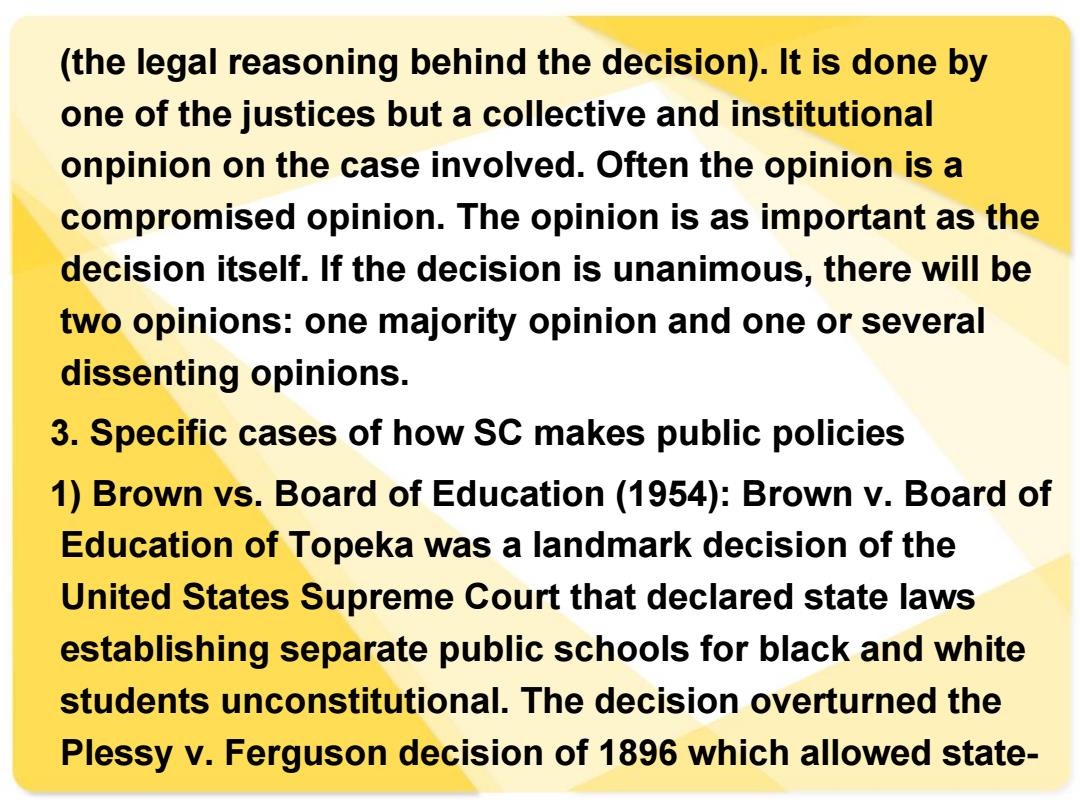正在加载图片...

(the legal reasoning behind the decision).It is done by one of the justices but a collective and institutional onpinion on the case involved.Often the opinion is a compromised opinion.The opinion is as important as the decision itself.If the decision is unanimous,there will be two opinions:one majority opinion and one or several dissenting opinions. 3.Specific cases of how SC makes public policies 1)Brown vs.Board of Education (1954):Brown v.Board of Education of Topeka was a landmark decision of the United States Supreme Court that declared state laws establishing separate public schools for black and white students unconstitutional.The decision overturned the Plessy v.Ferguson decision of 1896 which allowed state-(the legal reasoning behind the decision). It is done by one of the justices but a collective and institutional onpinion on the case involved. Often the opinion is a compromised opinion. The opinion is as important as the decision itself. If the decision is unanimous, there will be two opinions: one majority opinion and one or several dissenting opinions. 3. Specific cases of how SC makes public policies 1) Brown vs. Board of Education (1954): Brown v. Board of Education of Topeka was a landmark decision of the United States Supreme Court that declared state laws establishing separate public schools for black and white students unconstitutional. The decision overturned the Plessy v. Ferguson decision of 1896 which allowed state-